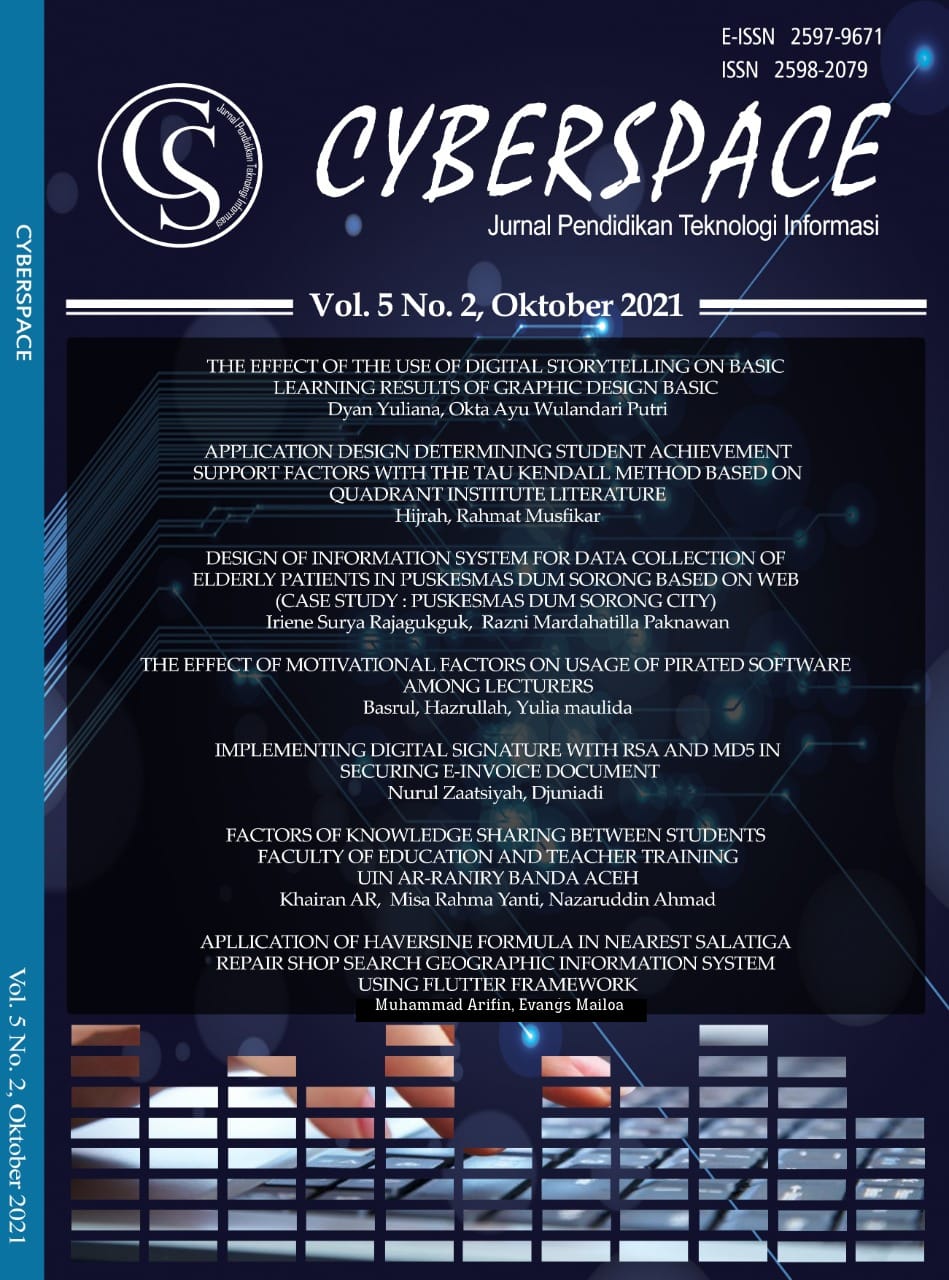APPLICATION DESIGN DETERMINING STUDENT ACHIEVEMENT SUPPORT FACTORS WITH THE TAU KENDALL METHOD BASED ON QUADRANT INSTITUTE LITERATURE
DOI:
https://doi.org/10.22373/cj.v5i2.9750Abstract
There are many factors that can affect student achievement, both internal and external factors. To find out what factors can affect student achievement, each data factor that can affect student achievement is tested for correlation with the Kendall Tau method so that the strength and relationship between student achievement and the supporting factors can be measured the relationship between the two variables. In this study, the correlation test of student supporting factors was carried out based on data obtained from the Quadrant Institute for further implementation into software or applications that can be used by students, parents and also the qudrant institute in improving student achievement and by developing these applications. then all information needs related to improving student learning can be done by simply accessing the application that has been designed.
Keywords : Student Achievement Factors, Correlation, Kendal tau, Applications Supporting Student Achievement
Downloads
Published
Issue
Section
License
Authors who publish with Cyberspace Journal agree to the following terms:
- Authors retain copyright and grant the journal right of first publication with the work simultaneously licensed under a Creative Commons Attribution License that allows others to share the work with an acknowledgement of the work's authorship and initial publication in this journal.
- Authors are able to enter into separate, additional contractual arrangements for the non-exclusive distribution of the journal's published version of the work (e.g., post it to an institutional repository or publish it in a book), with an acknowledgement of its initial publication in this journal.
- Authors are permitted and encouraged to post their work online (e.g., in institutional repositories or on their website) prior to and during the submission process, as it can lead to productive exchanges, as well as earlier and greater citation of published work (See The Effect of Open Access).



















